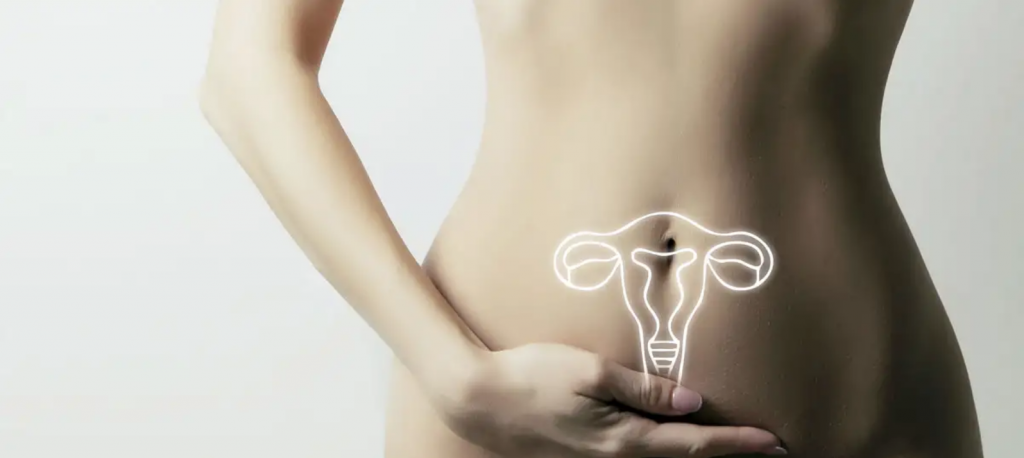Are you planning for pregnancy? You may need to take a look at your menstruation cycle.
A comprehensive understanding of the female body is incomplete unless you know about ovulation. Even if you are trying to avoid pregnancy, knowing the safe days are crucial.[1]
The menstrual cycle varies from women to women. It is not the standard 28-day cycle for everyone. This article attempts to shed light on all the things you need to know about ovulation, including the process of figuring out the peak fertility window.

The Biomechanics of Ovulation
Ovulation is the time in the menstrual cycle when a ripe egg (ovum) is released from the ovary- ready for fertilization. The egg, for one, has to be fertilized between 12 and 24 hours after release. The egg leaves the body if it fails to fertilize with a male sperm cell.[2]
Gonadotropin-releasing hormone (GRH) regulates the entire functions of the ovary. GRH is released by the nerve cells in the hypothalamus. It directs the pituitary gland to produce Luteinizing Hormone and Follicle Stimulating Hormone (responsible for the growth of the follicle).[3]
The cavity surrounding the egg (follicle) breaks – marking the start of the entire process. The breaking of the follicle is actually a response to a hormone signal (LH). The egg moves out of the ovary and passes through the fallopian tube to the uterus.[4]
The egg sits on the wall of the uterus, awaiting fertilization. If fertilization does not occur, the egg disintegrates along with the shedding of the uterus lining(plus blood and mucus) and leaves the body.
Ovulation usually takes place roughly halfway through the menstrual period of a woman. If the cycle is of 28 days, a woman may ovulate between day 11 and day 21 after the start of her period. For example, ovulation may take place around May 14, if her cycle begins on May 1.
Nevertheless, it is important to know that cycle length can differ between a span of 21–35 days. A few women have also reported other variations.
Hormonal Activities
Throughout the entire menstrual cycle, several hormones are involved.[5]
Gonadotropin-releasing hormone (GRH) regulates the entire functions of the ovary. Released by the nerve cells in the hypothalamus, GRH directs the pituitary gland to produce Luteinizing Hormone and Follicle Stimulating Hormone (responsible for the growth of the follicle)
The ovaries release the hormone estrogen and progesterone. An egg is produced when the estrogen level is suitably high. The Luteinizing hormone is responsible for this trigger release.
The LH is also responsible for the release of another hormone, progesterone from the ovary. Progesterone is responsible for preparing the uterus walls in anticipation of the pregnancy and raises the body temperature marginally.[6]
Tracking the cycle
A calendar, record-keeping skills, and patience are all you need to track your ovulation. Keep a consistent track of your cycles and symptoms for a few months. A number of applications, kits, and accessories are available in your arsenal. Some of them are free of charge, such as an online ovulation calculator. Ovulation testing kits (OTKs) and the rest are available for purchase.[7]
Women may try touching their own bodies. Understanding how the cervix acts during the cycle and the content of vaginal secretions allow identifying symptoms of ovulation.
The male sperm can survive for up to 5 days in the uterus. Meanwhile, the eggs can only be fertilized within 24 hours after ovulation, so theoretically, the couple gets a limited chance for reproduction per month. Ovulation will likely occur between the days 11 to 16 for a 28-day cycle. The fertile window period is calculated by considering five days prior.
It is important to remember that pregnancy happens just about 20 percent of the time, even in optimal conditions. Women who are trying to conceive shouldn’t really be surprised at all to know that it takes several attempts.[8]

Symptoms of Ovulation
- Abdominal Pain
During ovulation, women may experience lower abdominal pain situated to the left or to the right. .It is the ovaries getting ready to release an egg. The cervix – which reaches out to the lower uterus – becomes softer. The mucus becomes lighter and thinner. During this time, vulva or vagina can swell somewhat and become increasingly sensitive.
- Observe body changes- including temperature
Basal body temperature varies during ovulation. A small drop in temperature indicates the starting of ovulation. The temperature can slightly increase during ovulation. Use a thermometer.
Hormones are also responsible for the texture change of cervical mucus. The cervix is located at the bottom of the uterus. There, the sticky fluid (mucus) emanating from the cervix becomes more stretchy and slippery during ovulation. This allows easy passage to the male sperm- indicating the fertile window.[9]
- Ovulation Predictor Kits
OPKs are easily available at drugstores for purchase. They provide an accurate estimate for your LH using urine samples. LH levels remain highest during the fertile window- 24-36 hours before ovulation.
The kit has multiple test strips for analyzing the LH levels during the cycle. Start a few days before your estimated ovulation date. Follow it up for a few days- keeping tabs on the LH levels.
- Progesterone Ovulation kits
Progesterone ovulation kits monitor and inform you about your ovulation. The test process functions by analyzing the amounts of Pregnanediol metabolite (PdG) in the urine.[10]
Usually, PdG rates increase 24-36 hours after ovulation. As a result, the monitoring is precise. Such devices often include a variety of strips that monitor the levels of progesterone during the cycle.
Conclusion
Ovulation is a natural process. Understanding the process is essential for planning a pregnancy or avoiding one. The female body goes through various changes during this cycle. Always remember to check yourself and stay healthy.[11]
The fertility window is what you should be looking for if you want to conceive. The period ranges from the day of ovulation and five days beforehand. There are testing kits available in the market that give an accurate idea about your fertility window.[12]
[1] https://www.ncbi.nlm.nih.gov/books/NBK441996/
[2] Richards JS, Russell DL, Robker RL, Dajee M, Alliston TN. Molecular mechanisms of ovulation and luteinization. Mol. Cell. Endocrinol. 1998 Oct 25;145(1-2):47-54. [PubMed]
[3] https://www.ncbi.nlm.nih.gov/books/NBK279054/
[4] Treloar A.E., et al. Variation of the human menstrual cycle through reproductive life. Int J Fertil. 1967;12(1 Pt 2):77–126. [PubMed]
[5] Vollman R.F., The Menstrual Cycle. 1977, WB Saunders: Philadelphia.
[6] https://www.ncbi.nlm.nih.gov/pmc/articles/PMC5689497/
[7] https://www.ncbi.nlm.nih.gov/pmc/articles/PMC5730019/
[8] Hallberg L., et al. Menstrual blood loss–a population study. Variation at different ages and attempts to define normality. Acta Obstet Gynecol Scand. 1966;45(3):320–351. [PubMed]
[9] https://www.ncbi.nlm.nih.gov/pmc/articles/PMC27529/
[10] https://pubmed.ncbi.nlm.nih.gov/28723025/
[11] Lenton E.A., et al. Normal variation in the length of the follicular phase of the menstrual cycle: effect of chronological age. Br J Obstet Gynaecol. 1984;91(7):681–684. [PubMed]
[12] Groome N.P., et al. Measurement of dimeric inhibin B throughout the human menstrual cycle. J Clin Endocrinol Metab. 1996;81(4):1401–1405. [PubMed]

